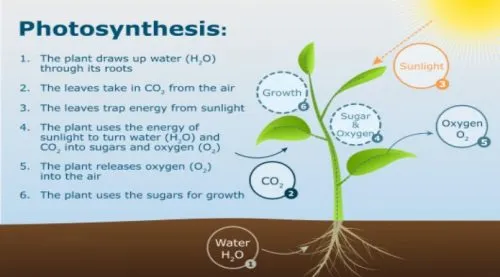This article was written by Jerry Spencer – Gilba Solutions PTY LTD
Not all of the sun’s radiance is light, the term ‘light’ refers to the radiance we can see. As humans we can only see a limited amount of the sun’s radiance, which isn’t a lot at all. However plants that photosynthesis have a much larger spectrum of usable radiance. The process of photosynthesis requires light energy and optimally occurs in the 400 to 700 nanometer (nm). This range is also known as visible light. However in studies performed by Dr McCree and Dr Emerson, they found that ultraviolet and infrared radiance are also a critical component in plant development even though there is considerably less usage than the ‘visible light spectrum’ and may not be used directly. These radiances are used for things such as antioxidant production.

Which leads us into the Emerson effect, which is when light from the PAR (photosynthetically active radiation) range is combined with infrared. Emerson effect is the product of photosystem 1 and photosystem 2 in the plant. These photosynthesis systems work together, sharing light to boost photosynthesis. Light below 600nm is first used in photosystem 2, where the light is used to split an electron from water and send it to photosystem 1. Photosystem 1 then uses that electron and light radiance from above 700nm which is infrared light to increase photosynthesis.
Absorption, before photosynthesis takes place the light needs to be absorbed by the plant. Red and blue light is absorbed well inside of the chlorophyll, leaving the majority of the green light to pass through the leaves to the lower layers of the plant, particularly in grass. Green, yellow and red lights have much higher transmittance than blue lights, so actually it’s these lights that power the growth beneath the canopy of a plant. Green and yellow light is absorbed in much higher quantities in the leaf structure such as the cuticle, epidermis, palisade mesophyll cells and the xylem tissue. The amount of light available can have a huge effect on photosynthesis, variables such as shade, artificial light sources, type of plant and the plant’s health. Blue light is used by the plant to determine whether the plant is in shade, low leaves of blue light will see taller weaker plants searching for a light source. Blue light does not penetrate through the canopy of plants. Too much blue or red light can actually stunt and burn plant tissue (bleaching).

It is a common misconception that more green light or none at all is needed for photosynthesis, this however is not true. The light required for photosynthesis is called PAR (photosynthetically active radiation), this is the full spectrum of light, from 400 to 700nm. The peaks in the PAR is green and red, with lower blue levels. Light reactions for photosynthesis take place in the chlorophyll of a plant.
Radiance from sunlight is not only wavelengths, it also exists as particles. These particles are called photons and when plants absorb these photons they also absorb the energy within those photons. Blue light photons contain more energy and a shorter wavelength than green and red, therefore are subsequently placed higher on the spectrum.
Purple grow lights produce large amounts of blue and red light, however minimal green yellow and orange. Purple grow lights have been trailed with relative success, but in reality don’t match what nature can provide. Mother nature never leaves anything to waste, plants need full access to the light spectrum to perform their best. Studies show that under purple light growth under the canopy is stunted as white LED’s have also been tested however low levels of blue light is the downfall of white LEDs. Wideband lights have optimal light levels for plant growth.
This article was written by Jerry Spencer – Gilba Solutions PTY LTD

